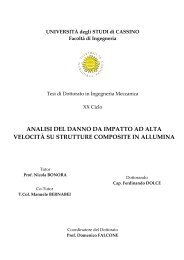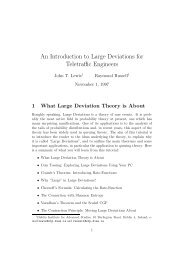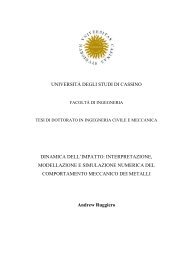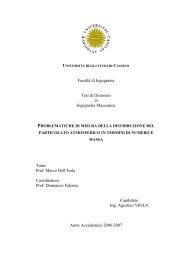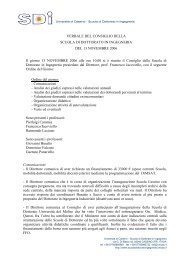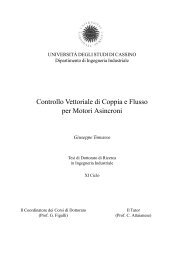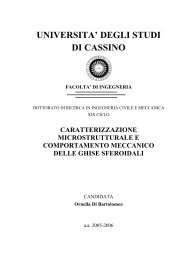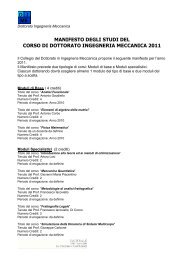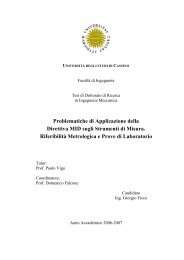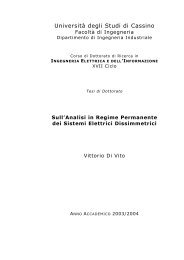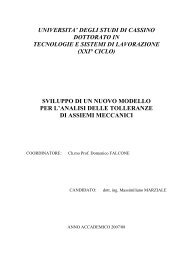Finite Strain Shape Memory Alloys Modeling - Scuola di Dottorato in ...
Finite Strain Shape Memory Alloys Modeling - Scuola di Dottorato in ...
Finite Strain Shape Memory Alloys Modeling - Scuola di Dottorato in ...
You also want an ePaper? Increase the reach of your titles
YUMPU automatically turns print PDFs into web optimized ePapers that Google loves.
3.4 Constitutive Equations - Hyperelastic MaterialStresses result from the deformation of the material, and it is necessary to expressthem <strong>in</strong> terms of some measure of this deformation such as, for <strong>in</strong>stance, the stra<strong>in</strong>.These relationship, known as constitutive equations, obviously depend on the type ofmaterial under consideration and may be dependant or <strong>in</strong>dependent on time. Forexample, the behavior of viscous materials is clearly entirely dependent on stra<strong>in</strong>rate. Generally, constitutive equations must satisfy certa<strong>in</strong> physical pr<strong>in</strong>ciples. Theequations must obviously be objective, that is, frame <strong>in</strong>variant. The constitutiveequations here<strong>in</strong> described are established for hyperelastic material, whereby stressesare derived from a stored elastic energy function. Although there are a number ofalternative material descriptions that could be <strong>in</strong>troduced, hyperelasticity is aparticularly convenient constitutive equation because of its simplicity and, as aconsequence, it constitutes the basis for more complex material models such aselastoplasticity.3.4.1 HyperelasticityMaterials for which the constitutive behavior is only a function of the current state ofdeformation are generally known as elastic. A so-called perfectly elastic material isby def<strong>in</strong>ition a material which produces locally no entropy (Trusdell and Noll, 1992).In other words, the term ‘perfectly’ is used for a certa<strong>in</strong> class of materials which hasthe special merits that for every admissible process the <strong>in</strong>ternal <strong>di</strong>ssipationD<strong>in</strong>tiszero (naturally, damage, viscous mechanisms and plastic deformations are excluded).Us<strong>in</strong>g as stra<strong>in</strong> measure the deformation gra<strong>di</strong>ent F associated with a particle X <strong>in</strong>the current configuration and its conjugate first Piola-Kirchhoff stress measure P thebasic material elastic relationship is given byP=P( F( X), X )(3.89)52



